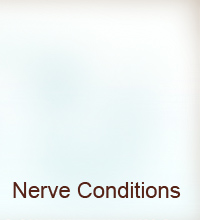Carpal Tunnel Syndrome
The median nerve passes through a tunnel as it enters the hand. If the boundaries of the tunnel become crowded, then the contents become compressed and function may be affected. The median nerve is the most sensitive of these structures and if compressed there can be neurological and pain symptoms affecting the hand and forearm. The diagnosis is made clinically and with use of electrodiagnostics. Surgery is needed in all but very mild cases, and is straight forward. This is called a Carpal Tunnel Decompression where the superficial roof of the tunnel is opened and room created for the underlying nerve.
Ulnar Neuropathy
The ulnar nerve is commonly compressed in a ligamentous (fibrous) tunnel that it passes through around the inside of the elbow. The symptoms and signs are characteristic and the diagnosis confirmed with nerve conduction tests. Surgery, an ulnar nerve decompression, consists of opening up of the tunnel and in some cases, moving the nerve to a safer nearby location.
Trigeminal Neuralgia
When the Trigeminal nerve (nerve for facial sensation) is compressed by a nearby artery, a pain syndrome called "trigeminal neuralgia" can develop. This results in episodes of excruciating pain affecting one side of the face. In cases, where the symptoms are poorly controlled by medications, then a relatively simple operation, where the offending artery is separated from the trigeminal nerve by a small piece of inert material is highly effective in relieving pain. This is called a microvascular decompression.
Hemifacial Spasm
Hemifacial spasm, is an uncommon condition of irritation affecting the large motor nerve called the facial nerve. It results in involuntary movements of various parts of the face, usually beginning with the eye muscles. Some medications can be effective, and many patients receive short term benefit from percutaneous Botox injections. When these measures fail, surgery can be very effective in providing a permanent solution. A nearby arterial loop is usually found compressing the nerve close to its origin. The vascular loop is gently removed from the nerve and a soft pledget placed to keep it away. The long term results are very good. However, the procedure carries a small risk of hearing loss on the same side.
|




